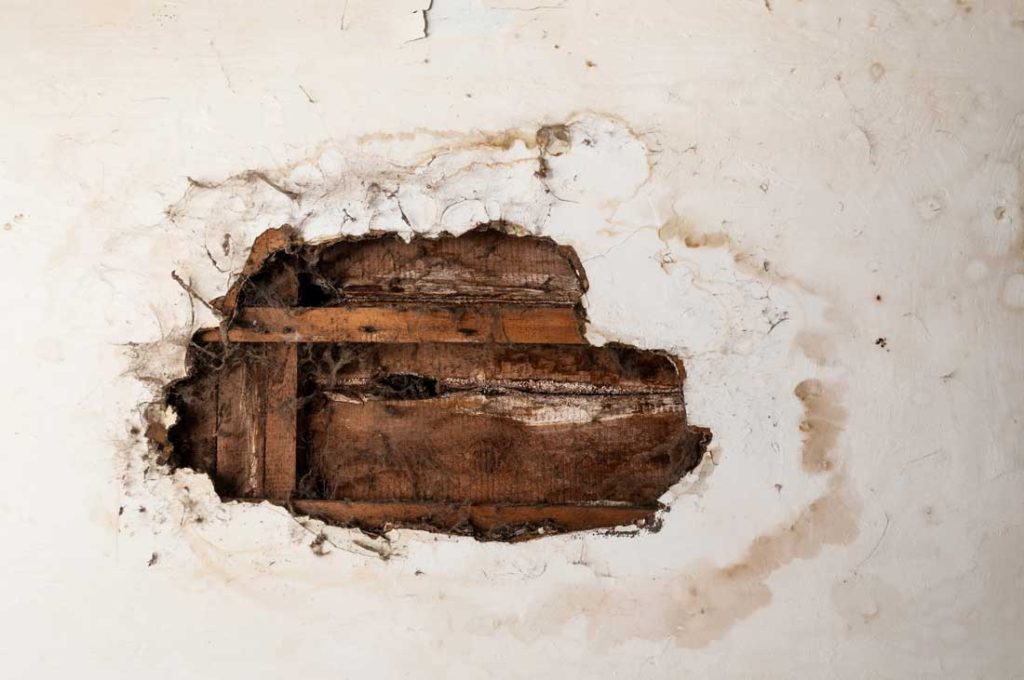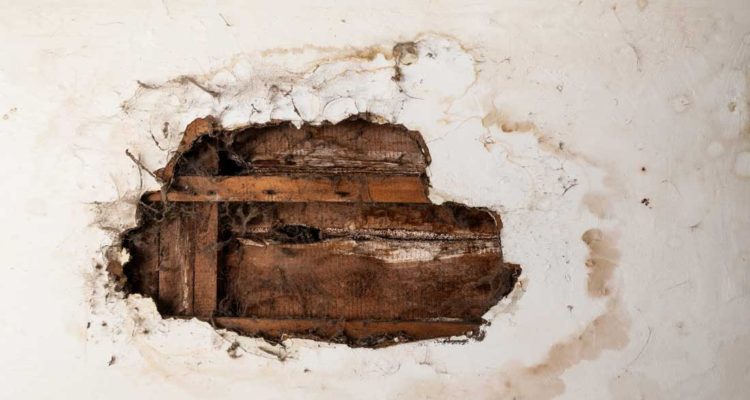Let’s get one thing out of the way:
Faulty roofs can be a tricky bunch to deal with.
However, you might not need to call on a professional repairman everytime something is wrong with your roof. In this piece, we will be exploring how you can find the fault and fix roof leaks yourself. The below descriptions are to be taken as an introduction insight to the fixes you need to carry out, we always advise that you hire a local professional to make sure that your issues are fixed without issue to you or to your building.
The Problem with Leaking Roofs
You have probably been in a situation where your walls/ ceilings started getting some stains from running down water. More often than not, a leaky roof is always at the base of such problems. It is imperative that you find the source of the leak and address it as soon as possible.
Speaking of finding the source, that has to be one of the trickiest things when trying to fix roof leaks. We will however show you how to do that effectively in this piece.
Another thing to note is that you shouldn’t wait to get your roof fixed. Even if you would be replacing the whole setup soon, leaving it unfixed could lead to secondary problems: molds, sheathing, damaged ceilings and insulation problems, to mention but a few.
Locating Roof Leaks
The first (and easiest way) to track a roof leak is by looking at the roof from the top of the area where the stains are coming from. Check out the roof penetrations (plumbing, chimney, etc.) in that area as they contribute to a high percentage of leaks in roofs.
If your building has an attic, you might want to go in there with a flashlight to see where the leak originates from too. Tell-tale signs to show you the leaking area would be stains, molds and black marks.
Tracking Difficult Leaks
Some roof leaks are more difficult to find than others. When in a bind, enlist the help of a tracker to help you position the area of the leak.
With your tracker inside the house, go onto the roof with a garden hose (connected to a water source) and flood the roof with water. Start with different regions where the leak is appearing in the house and let the water run for a couple of minutes.
The tracker within the house is there to monitor when a leak becomes visible as a result of your actions up there.
Due to this being a trial-by-error method, getting the source of the leak could range from a few minutes to a couple of hours. Patience is key here.
Fixing Small Leaks
Small leaks are sometimes the hardest to find. Ceilings with plastic vapor barriers shielding the drywall and attic insulation can be checked for leaks. This is done by pushing the plastic aside and then, looking for flow stains on the said barrier.
Another common tell for small leaks are nails which have missed their framing member in the carpentry setup. Called shiners, these nails have moisture escaping into the cold attic condensing on them. On warmer days, this condensate is converted to water which drips.
You can always fix a similar problem by clipping the nail with the aid of side-cutting pliers.
Fixing Plumbing Vent Boots
Plumbing vent boots are made of different materials. Some feature a full plastic build, others couple plastic to metal while the rest take on a two-piece metal design.
Leaks on the plastic vent boots will usually be evident from cracks on the underside while rust signifies the problem for metals. At this point, you will have to buy new vent boots.
Should the boots still be in good condition but with missing nails, all you need do is get some new rubber-washered screws to secure the boots back in place.
Fixing Roof Vents
Plastic roof vents will leak when they are cracked while the metallic ones will do the same when they’ve got broken seams. It might seem a good idea to put some caulk on the problem area, but that won’t do you any good. The best solution would be to buy entirely new roof vents to replace the old ones.
In the case the vents are still in good condition but with bad/ missing nails, rubber-washered screws should do the magic here again.
Fixing Walls and Dormers
Walls and dormers are susceptible to causing leaks when wind-driven rain is directed onto their path. The problem will be further heightened when the caulk around the dormer wall area has been chipped off or is out of place, preventing total sealing thus causing water penetration.
Investigate the sealing rate of the caulk by checking with a putty knife. Remove any poor caulk and replace them with latex caulk (siliconized).
You should also consider replacing the rotten, cracked or missing siding on your dormer walls to ensure the water is sealed out.
Dealing with Complex Roof Leaks

Ice dams are the source of one of the most complex roof leak problems. An ice dam is said to occur when the colder edges of your roof act as a point where snow melts and water freezes. The melted snow will work their way around the roof shingles (and beneath the soffit) until they find a point which they can exploit, resulting into a leak.
The obvious thing to do here is to ensure proper flashing. The flashing will hold off leaks from rainfall and might even do well to hold its own against ice dams too.
Should the ice dam problem persist, it is recommended that you install roof edge heating cables. These drive off the moisture as steam rather than allow them condense and form dangerous water bodies on/ around your roof.
Fixing Step Flashing
Step flashing is used to channel water away from walls that are connected directly to the roof. When even a small part rusts or breaks away, the water will run directly into the house instead.
On sighting problems with the step flashing, replace the flashing in the entire problem area.
To do so, you will have to go through the removal of the shingles, prying of the siding away from the flashing, then removing and replacing the step flashing.
Forget Caulk!
Many make the mistake of using caulk for just about any type of roof leaks they have. When possible, it is advisable that you go for repairing or replacement so as to enjoy the fix for longer. Caulk is only a recommended option for roof repairs when the damage is really small.
Fix Small Holes
Tiny holes can be a result of satellite dish mounting, part repair jobs, antennae installation or anything else at all. They are usually a dangerous type because they cause damages silently till it grow into a big issue.
When these small holes are faults of exposed/ misplaced roofing nails, the nails should be removed and the resulting hole patched up.
While small holes are relatively easier to fix, stay away from caulk! Rather, fix the small hole problem with flashing.
Brick Chimney Leaks
Brick chimneys are one of the major roof projections (mentioned above) that can cause a lot of leak problems.
Flashing is an excellent addition around chimneys to prevent leakages, but even those can rust after a while – especially if they are of galvanized steel material.
A quick fix to this problem – which, fortunately, lasts long too – is to slip yet another flashing under the old one. That helps divert the water from leaking into the house.
If you would like a total fix though, consider sawing a kerf through the mortar and installing a new flashing outright.


